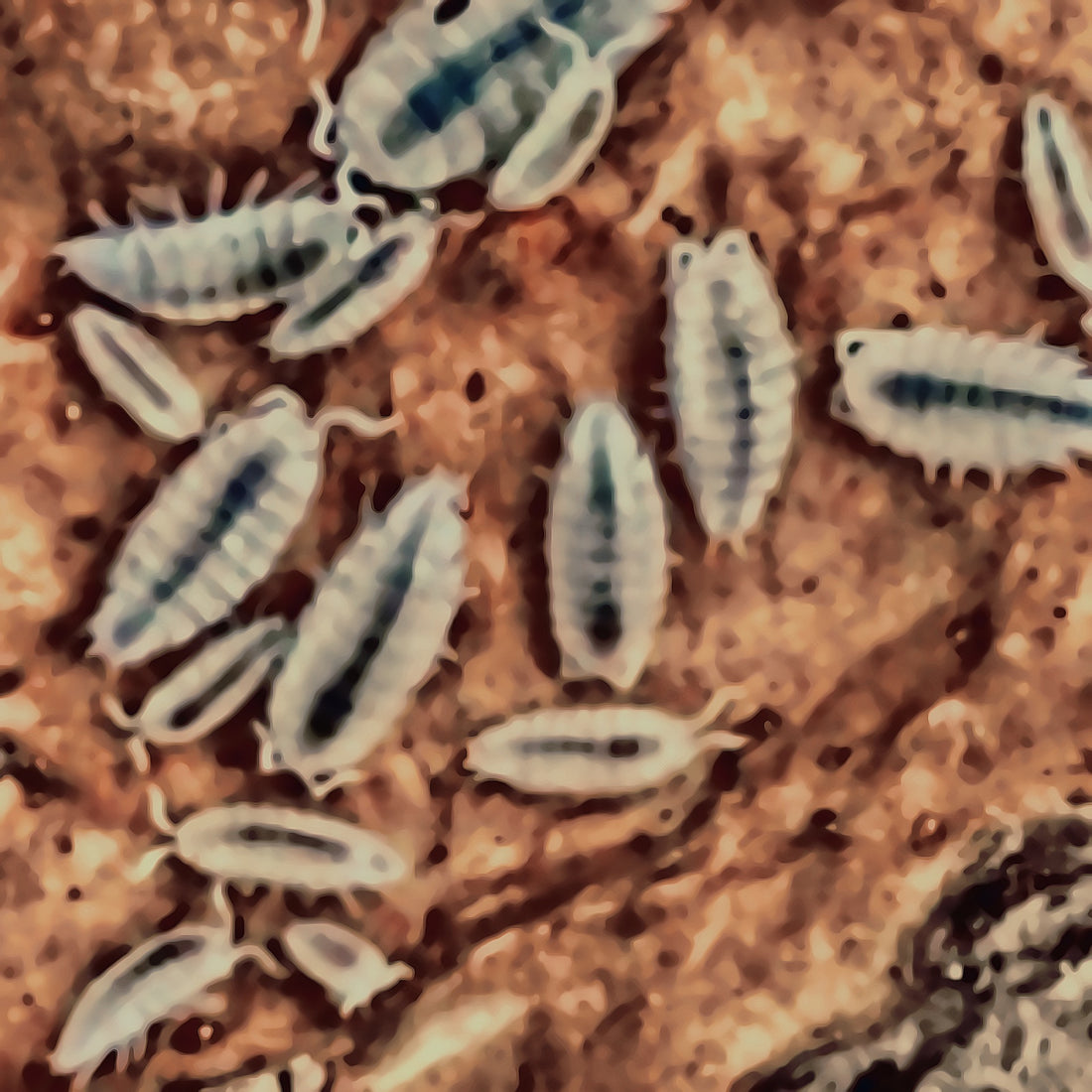Trichorhina tomentosa, commonly referred to as the dwarf white isopod, belongs to the family Platyarthridae and is a fascinating species of woodlouse. One of the most interesting aspects of this isopod is that it is parthenogenetic, meaning it reproduces without the need for male fertilization. As a result, only female individuals are known to exist in this species, which allows for rapid population growth under suitable conditions.
These isopods are small, typically measuring around 4-6 mm in length, and are recognized for their pale, almost translucent appearance, which can sometimes appear white or light gray. This coloration helps them blend into their natural habitat, which includes moist environments such as leaf litter, decaying wood, and under rocks, providing them with protection from predators.
In terms of habitat preferences, Trichorhina tomentosa thrives in humid conditions, making them well-suited for terrariums or vivariums that replicate their natural environment. They require a substrate that retains moisture, as well as plenty of hiding spots, such as leaf litter and small pieces of bark, to feel secure.
Feeding-wise, these dwarf white isopods primarily consume decomposing plant matter, such as leaves and wood, along with any organic detritus they can find. This detritivorous diet not only keeps them healthy but also contributes to the breakdown of organic material, recycling nutrients back into the ecosystem.
Due to their small size and modest care requirements, Trichorhina tomentosa is a popular choice for both novice and experienced hobbyists interested in maintaining bioactive setups. They serve as effective cleanup crews, helping to keep terrariums tidy by consuming waste and leftover food.
Additionally, their unique reproductive strategy and ability to thrive in various conditions make them a fascinating subject for study and observation. Overall, the dwarf white isopod is not just an interesting pet but also plays an essential role in maintaining ecological balance within its habitat.

